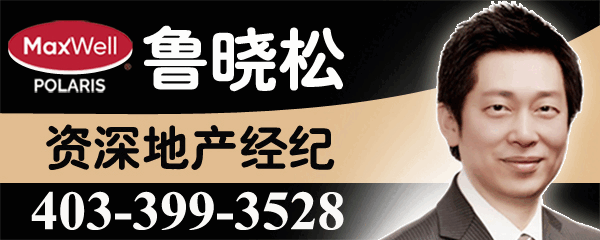头衔: 论坛版主


信息:  
威望: 0
来自: 卡城皇家保险 
总发贴数: 418 篇
注册日期: 2008/03/12
|
|
 消息 消息  查看 查看  搜索 搜索  好友 好友  邮件 邮件  复制 复制  引用 引用  回复 回复
 |
How to retire: Dos and Don'ts
by Andy Holloway, Erin Pooley and Thomas Watson, Canadian Business magazine
Humourist Stephen Leacock didn't see anything fun about retirement. "Have nothing to do with it," he advised young fellows of his day. "Have you ever been out for a late autumn walk in the closing part of the afternoon, and suddenly looked up to realize that the leaves have practically all gone? And the sun has set and the day gone before you knew it, and with that a cold wind blows across the landscape? That's retirement." Leacock, of course, was forced to leave his cushy academic career at McGill University, in Montreal, in 1936. He might have argued in favour of keeping compulsory retirement if he was around today, managing floating exchange rates for a living or serving as a director of a public company. After all, in the age of globalization and activist investors, work can feel dark and dreary — inspiring dreams of the day you can skip your cellphone across cottage lakes.
But carefree retirement isn't a given — it's a goal, one taken too lightly by too many Canadians (rich and poor, alike). People are living longer, while starting careers later, thanks to expensive education that doesn't guarantee wealth. Meanwhile, savings rates are low, the Canada Pension Plan is under siege from retiring boomers and an aging population, and corporations are ditching defined benefit plans. Canadians are seriously worried. Indeed, according to an Investors Group survey, only 31% of Canadians approaching retirement expect to be ready financially, while 4% report they'll be emotionally equipped. But don't be scared; get prepared. To keep you off your local park bench (not counting naps or quality time feeding pigeons), Canadian Business polled the professionals to come up with a modern guide to planning life after work. Let's call it: Living Well in Autumn, to honour Leacock, who died of throat cancer in 1944, after just eight years of hated retirement.
Don't wait to plan your retirement
The average Canadian man lives to 78, and the average woman to 81. And today's 65-year-old couple has a one-in-two chance of at least one person reaching 92 years of age. But most people wait until age 50 to get serious about saving for retirement — leaving 15 years to accumulate enough assets to fund at least 15 years of retirement. So, if you haven't given any thought to retirement by 45, get cracking, says Marc Cevey, chief executive officer at HSBC Investments (Canada) Ltd. The 20 years between 45 and 65 are known as the "accumulating phase." The earlier you start, the more you'll have to fund what could be nearly half your life.
Don't listen to Trooper
It's nice to get out of the rat race, but plan to have enough cheese to provide for a long time, not just a good time. Avoid the urge to dump all your funds into ultra-conservative financial instruments such as GICs. According to Walter Updegrave, author of We're Not in Kansas Anymore: Strategies for Retiring Rich in a Totally Changed World, a good rule of thumb is a 40/60 mix of diversified stocks (including dividend-paying shares) and bonds (public and private). Updegrave also says to keep future needs and inflation in mind when managing your annual withdrawal rate after retirement.
Do maximize your savings program now
The average income desired in retirement is $3,500 per month, according to a 2005 survey of 5,325 people 45 and older by BMO Financial Group. That means you'd need at least $1 million in today's dollars to pay for 25 years of retirement if you left work now (and more if you're still a few years away, to account for inflation). While financial planners tend to look at retirement from an annual-income or lump-sum point of view, the majority of pre-retirees see it from a monthly perspective, which makes the total amount needed look a little less scary. Oddly enough, Canadians have $367.3 billion in unused RRSP contributions, according to the most recent Statistics Canada data available, indicating many haven't thought about retirement enough.
Do diversify your retirement income sources
Canadians draw (or expect to draw) pensions from many different income sources, including government pensions (89%), sheltered investments such as RRSPs and RRIFs (78%), and employer pensions (72%), according to the BMO survey. Cevey says pensions should account for no more than 50% of your expected retirement income, with the rest coming from ongoing investments. Roughly half of Canadians expect to get money from non-sheltered investments, and nearly a third will at least partly rely on continued employment.
Don't give all your money to junior
Shifting wealth from one generation to the next results in a loss of net worth 70% of the time, according to a Leadership Family Institute study of more than 3,000 families in the U.S. and Canada. The most successful at keeping the family money alive are those people who sink their legacies into philanthropy. Why? Families who manage a private foundation are more likely to share common values and enjoy robust consensus on decisions, key to keeping the family wealth intact. But for those who absolutely must keep it all in the family …
Honey, I tested the kids
Paul Desmarais is betting billions that his two sons can jointly keep the sun from setting on his Power Corp. empire. Statistically speaking, though, the odds aren't great. Experts say family-run businesses fail at least 50% of the time when control is passed on. Why? Wealthy children often develop personalities that aren't cut out to follow in the footsteps of self-made entrepreneurs, which is why some succession planners recommend putting Jimmy (or Jane) Jr. in front of an industrial shrink to see if they have what it takes to succeed as Family Biz CEO 2.0. That, of course, can cost more than $10,000. So, here's some free advice from someone well versed in breeding turkeys: "You can hire better than you can sire," said Alfred Cuddy, after a public family battle threatened to tear apart Cuddy's multimillion-dollar poultry operation in the late '90s.
Don't count on the government to fund the bulk of your retirement savings
By 2016, there will be more seniors than children under 14 in Canada: 6.9 million who could be taking money out of the Canada Pension Plan. This could mean a scaling back of benefits, which are already paltry enough. Consider that in 2004 the average monthly CPP payout was $457.99, but the average rent for a one-bedroom apartment in Toronto was $886. Though the CPP is currently fiscally sound, according to a June review by the federal and provincial finance ministers, it can only offer so much. The 9.9% contribution rate is only designed to replace roughly 25% of your earnings. And remember: old age security benefits begin to be clawed back for people with retirement incomes more than $60,806.
Do expect to work
Retirement is no longer considered a fixed point in time. It's really a series of phases from full-time work through active retirement to permanent retirement. Nearly three-quarters of pre-retired Canadians expect to work in some capacity after they retire from their full-time jobs, according to BMO's survey. That transition period can dramatically extend the amount of time your retirement savings last—allowing you to keep saving longer. "The good news is that retirees will be working not just because they want to, but because the market will demand it," says Cevey. The coming end of ageist discrimination is indeed good news, as 58% of pre-retired Canadians plan on working in some capacity during retirement.
Do plan for contingencies
For instance, you might have to take care of your parents. By 2010, 60% of Canadians over 50 will have a surviving parent, and care costs can be significant. What's more, the number of employers providing retirees with health coverage dropped from 50% to 31% during the past five years, according to a study by workplace consultant Watson Wyatt. The study also predicted 90% of all costs associated with long-term care, such as nursing expenses and drug costs, won't be covered by existing plans within 30 years. Monique Tremblay, senior vice-president, savings and segregated funds, Desjardins Financial Security, points out women tend to be dependent on care facilities for six years on average; men average one year in care.
Don't go into retirement with debt
Pay as much of your mortgage and debt off as you can, so your income funds your lifestyle, not past purchases. Sound like a no-brainer? Consider that 66% of Canadians surveyed by BMO carry debt into retirement, with more than a quarter of those people feeling uncomfortable with that debt. And more pre-retirees expect to be debt-laden, with 68% expecting to carry some debt into their retirement years.
Do be realistic about lifestyle choices in your golden years
Being able to play golf every day or travel the world sounds great now, but that could get mighty stale—not to mention expensive—if your retirement lasts 15 to 25 years. Figure out what kind of lifestyle you want, then analyze your expected assets and expenses with a professional to determine your income needs. There are no hard and fast rules, but Tina Di Vito, vice-president and managing director of retirement planning at BMO Nesbitt Burns, uses this dictum: if you withdraw 4% of your capital annually, your savings should last 33 years; if you withdraw 10% annually, you're out of money in 11 years. Be sure to plan accordingly.
Don't help criminals retire rich
The RCMP suggests retirees keep up with common consumer frauds. Con artists love people with time and money, and not all scams involve e-mails from pretend finance ministers of war-torn nations. In the "bank examiner" con, an official-looking scammer preys on retiree fears by claiming to be investigating possible skulduggery at a mark's financial institution. The mark is asked to help protect their wealth by handing over a cash withdrawal for a "standard" serial number check. Too many financially stressed people fail to follow the RCMP's simple rule: do not enter into any business transaction you have not thoroughly examined.
Plan for par or better
The loonie has risen against the U.S. greenback, which means Canadians can throw more money around snowbird country. And right now, retirees can also get more bang for their limited bucks in other places, thanks to Canada's relatively strong currency. Take trips to nations with central banks that try to compete with China's peg to the U.S. dollar. As things stand, you can pretty much take your pick. Mexico, for example, is a great deal. In 2002, a loonie bought fewer than six Mexican pesos. Today, the peso trades at 10 to a loon.
Don't ditch the spouse
According to a 2005 study from Ohio State University, people who divorce lose an average of 77% of their personal net worth over time. Ouch! And the economic impact of divorce, particularly at retirement time, when accumulated funds should be going toward things such as health care, travel or accommodation, can be devastating. Love him or leave him...but remember the consequences.
Do revisit your will
Set out a plan for where your money will go after you do— particularly if you own a family business. An estate plan, while helping minimize taxes, can freeze your current shareholder value and pass on any increases in value to your kids. One option is to design your will "to ensure that control of business assets remains within members of the family active there, and that other family members are compensated in other ways," says Saul Paton, who specializes in estate planning, wills and trusts for Toronto law firm Elkind & Lipton LLP. (See Open the Kimono, for more.) Major changes in circumstances—a disabled child or critical illness—may also warrant a second look at your will and your designated powers of attorney. If you have two young kids, expect to pay about $1,000 for a standard will; more complicated wills can run into the several-thousand-dollar range.
Open the kimono
Take a holistic approach to life after work by seeking expert counsel to develop a tailor-made retirement solution, advises Dave Finnbogason, CFO and a senior vice-president with Richardson Partners Financial in charge of family wealth planning. "The days are long gone when one adviser can do it all," he says. Estate planning is far too complicated to rely on cookie-cutter advice, especially for those running a family business. Finnbogason advises clients to "open the kimono"—in other words, expose naked desires to all concerned. Why? Nobody, he says, seems prepared to think about values or passions when life is running out. But a well-planned retirement requires honest soul-searching about what you want from your golden years—and what you expect from your estate after you retire to a pine box. Retirees-in-waiting should also include all family members and advisers (lawyers, doctors and accountants) in the process. After all, a plan is only workable with everyone's cards on the table—and a big-picture understanding of resources. Only then can you make informed choices on when and where to retire, who gets what of your savings while you're still breathing and whether to control how the leftovers of your life are eaten—from the grave.
Don't go to seed
Here's a revealing fact: less than half of Canadian companies provide post-retirement health benefits. So, rather than waiting for the gold watch before you start thinking about health-insurance needs, look into options now. Most provincially funded medical plans offer enhanced coverage when you hit age 65, including insurance for drugs, nurses, eye care and paramedical services. But you might consider purchasing an individual health plan from your former employer's insurance carrier when you retire. Why? If you purchase your plan at that time, you may avoid medical examinations later on, which can result in more expensive premiums, or being rendered ineligible for coverage.
Options—including insurance for critical illness, extended health, dental and long-term care—abound, so it's also wise to consult an expert. Pat Irwin, president of ElderCare Canada—a Toronto-based consultancy that charges $125 an hour to help clients navigate the elder-care market—says budgeting for in-home care is a good idea. Hiring a "granny nanny" to provide non-medical home care for a few hours a day, seven days a week, can run upwards of $25,000 per annum. An average retirement home will cost you about $50,000 a year—and subsidized care in a nursing home, around $27,000 per person. Irwin's advice? Stay healthy, and avoid costly medical bills down the road.
Strategize your savings
Do review your investing strategy at least once a year. When RRSP season rolls around each February, too many Canadians make a quick decision to buy GICs (a.k.a. guaranteed investment certificates) for the tax break. That hastiness is a mistake, says Marc Cevey, CEO of HSBC Investments (Canada) Ltd. Review your investments at least once a year, and make sure you include a detailed evaluation every five years. A retirement plan, including expected needs, savings and costs, should be thought out early and fine-tuned as you get older. After all, as you approach retirement, your needs will become clearer.
|
|
| |



























